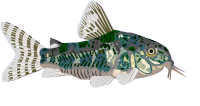I've got a somewhat unusual situation with some petricolas.
First:
55 gallon tank established for 3+ years
PH:8.3
Ammonia, nitrite: 0
Nitrate: 15
KH: 12
5 syno petricols
1 s. angelicus
Long story short:two of the petricolas were added to the tank last November after being in quarantine for over two months. I kept them in there that long because even tho they looked great they were somewhat lethargic, (hanging in a fake plant all day) not eating much, allowing me to poke them with my finger, etc.
I treated them with Maracide and there seemed to be a little improvement and finally I put them in the 55 and right away they started acting like real petricolas and I concluded that their problem had been the small q-tank and lack of tank mates. Yipee.
Now the mbuna who use to live in the 55 with all the petricolas is in a hospital tank dieing from velvet. (Have tried all meds--nothing has worked). The only place he could have gotten the velvet from was the petricolas.
The petricolas show absolutely NO symptoms of velvet or any other problem. They are as healthy and as happy as petricolas get, but I know its got to be there and my concern is that eventually they will start to show signs of it.
What would you do? Wait till they show symptoms? Treat the tank now, and if so with what?
Anyone have any experience with petricolas AND velvet?
Sorry for the length--it was the only way to ask for help with fish that seem to have no symptoms and appear to be healthy.
Robin





